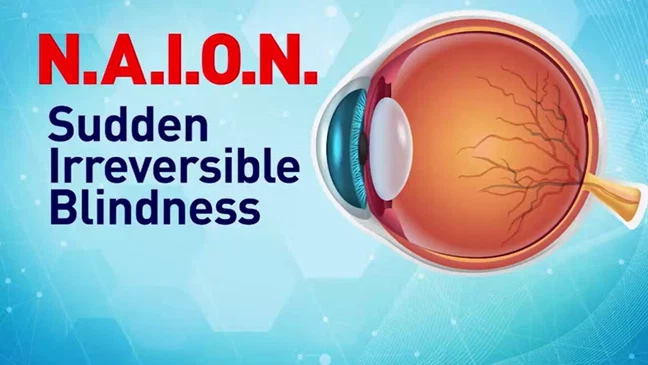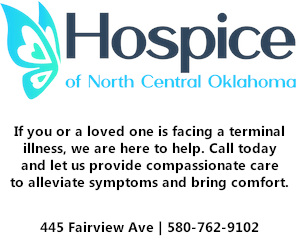WASHINGTON (SOA) — A growing number of patients claim popular weight loss and diabetes drugs like Ozempic can cause a rare but very serious side effect they were never warned about: sudden, irreversible blindness. A Maryland man says it happened to him. He talked exclusively to Spotlight on America correspondent Angie Moreschi, as we examine why it’s taking so long to warn the public about this potential risk.
62-year-old Todd Engel is re-learning how to navigate life, as a man who is now blind.
“It’s been a catastrophic adjustment for me. I can’t drive. I lost my job,” Todd explained, as he and his wife of 41 years, Shelley, sat down with Spotlight on America for this exclusive interview.
Todd and Shelley have been married for 41 years. It’s been almost a year since Todd completely lost his vision, months after he started taking Ozempic to help control his diabetes.
TODD ENGEL: I woke up and I was blind.
ANGIE MORESCHI: Just all of a sudden?
TODD ENGEL: All of a sudden, overnight. I was terrified. It’s been a struggle, both physically and emotionally.
“What I miss most is being able to see my wife’s beautiful face every day. I will never be able to see her face, how beautiful she is to me, ever again,” Todd said, fighting back tears.
Todd and Shelley have worked hard to adjust, updating their home to include special features for the visually impaired from braille-like dots on appliances to a voice remote for the TV.
“It’s changed everything that we knew before,” Shelley told Spotlight. “The hardest part is watching a man who could do anything and everything, basically do nothing on his own. It’s just devastating.”
NAION diagnosis
Todd first lost sight in just his right eye, just a few months after being prescribed Ozempic in September of 2023 to help control his diabetes. Ozempic is part of a class of drugs called GLP-1s that doctors have called game changers in the treatment of diabetes, heart disease, and obesity.
The morning that he suddenly went blind in that eye, he and Shelley immediately went to his eye doctor. Eventually, it led to the diagnosis of a rare condition called Nonarteritic Anterior Ischemic Optic Neuropathy, also known as NAION, which causes sudden, irreversible blindness, when blood flow to the optic nerve is blocked.
Little was publicly known at the time about sudden blindness as a possible risk factor for diabetics using GLP-1s. So, Todd stayed on the drug.
“Neither the doctors nor myself knew anything of that. If I had known (of a possible risk) there would be absolutely, unequivocally, no way that I would’ve ever, ever, have taken this medication or stayed on it,” Todd told Spotlight.
Ten months later, his left eye went dark, too. Now, the Engels blame Ozempic
“There was no other change in your life besides the Ozempic,” Shelley said, motioning to Todd. “They did all these tests to see what could have caused it. And every test came back normal in things that could have affected it. So, the only common factor is that he was on Ozempic.”
Research emerging
Around the same time that Todd lost his sight, research was beginning to emerge showing a potential increased risk for NAION in diabetic patients using semaglutide, the active ingredient in Ozempic, Wegovy and Rybelsus. It included a Harvard study in July of 2024 that indicated a four times higher risk of NAION for diabetes patients using semaglutide and a seven times higher risk for obese patients. A second Danish study published in December of 2024 indicated double the risk for diabetic patients.
But there is conflicting data. Additional studies earlier this year have shown “no significant increased risk” or only a “modest increase.”
But just this summer, the European Medicines Agency conducted a safety review and recommended that product information for semaglutide medicines (namely Ozempic, Rybelsus and Wegovy) be “updated to include NAION as a side effect with a frequency of ‘very rare’.”
The EMA’s Safety Committee also issued this advice:
If patients experience a sudden loss of vision or rapidly worsening eyesight during treatment with semaglutide, they should contact their doctor without delay. If NAION is confirmed, treatment with semaglutide should be stopped.
In addition, the World Health Organization issued a safety alert this summer on the “risk of NAION” when using “semaglutide medicines—Ozempic, Rybelsus, and Wegovy.”
The WHO Advisory Committee on Safety of Medical Products concluded “the Risk Management Plan for semaglutide should be revised to include NAION as a potential risk.”
In response to the research potentially linking semaglutide to NAION, Todd and nearly two dozen other people have filed lawsuits alleging the drug led to their blindness.
Consumer attorney Grace Chandler with the Motley Rice law firm represents the Engels.
“It’s the company’s ultimate responsibility to be watching out for what risks are associated with the drug and to warn about risks as they learn about them,” Chandler told Spotlight on America.
Warning about “vision changes”
Ozempic includes a caution about possible “vision changes” in its commercials, saying “tell your provider about vision problems or changes”– but there is no specific mention of NAION.
Chandler says that warning is too vague.
“NAION is not just worsening vision loss. You’ve seen Mr. Engel. This is permanent, irreversible blindness,” Chandler said.
Novo Nordisk is the maker of Ozempic. The company declined to do an interview with Spotlight on America, but provided this statement:
Patient safety is a top priority for Novo Nordisk, and we take all reports about adverse events from the use of our medicines very seriously. NAION is a very rare eye disease, and it is not an adverse drug reaction for the marketed formulations of semaglutide (Ozempic, Rybelsus and Wegovy) as per the approved labels in the US. Novo Nordisk, on its part, has conducted an analysis across randomized controlled clinical trials with GLP-1 receptor agonists, including a blinded ophthalmologist evaluation to confirm NAION diagnoses. Our current assessment is that these data do not suggest a causal relationship between GLP-1 RA use and NAION events. We continue to monitor the safety profile of our products and work closely with regulators to ensure continued compliance with their guidance. Regarding the lawsuits, Novo Nordisk believes that the allegations in the lawsuits are without merit, and we intend to vigorously defend against these claims.
In regard to the European Medicines Agency recommendation to update the product information for Novo Nordisk medications Ozempic, Rybelsus, and Wegovy to indicate NAION is a very rare risk, the company told Spotlight:
Based on the totality of evidence Novo Nordisk concluded that the data did not suggest a reasonable possibility of a causal relationship between semaglutide and NAION and that the “benefit-risk profile of semaglutide remains favorable”. Novo Nordisk will collaborate with EMA to update the EU SmPC and patient leaflets.
In June, citing the “severe and irreversible nature of NAION and the growing popularity of GLP-1 RAs,” along with “safety questions over the past year,” the FDA launched a Sentinel study to evaluate the potential increased risk for sudden blindness, while using medications like Ozempic, Rybelsus and Wegovy.
Call for clear warnings
The Engels stress that they want these products to be clearly labeled with the potential risk for NAION, so patients can make informed decisions about whether to use them.
“I don’t want this to happen to anybody else. It’s been devastating, not only for me, but to my family,” Todd told us.
They told Spotlight they hope by telling their story, it will help make others more aware of the potential risk for sudden blindness when using semaglutides.
“There’s no going back. There’s not like they can fix this or do something to help us. That’s it. He’s blind forever,” Shelley said.



























